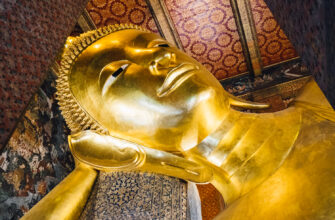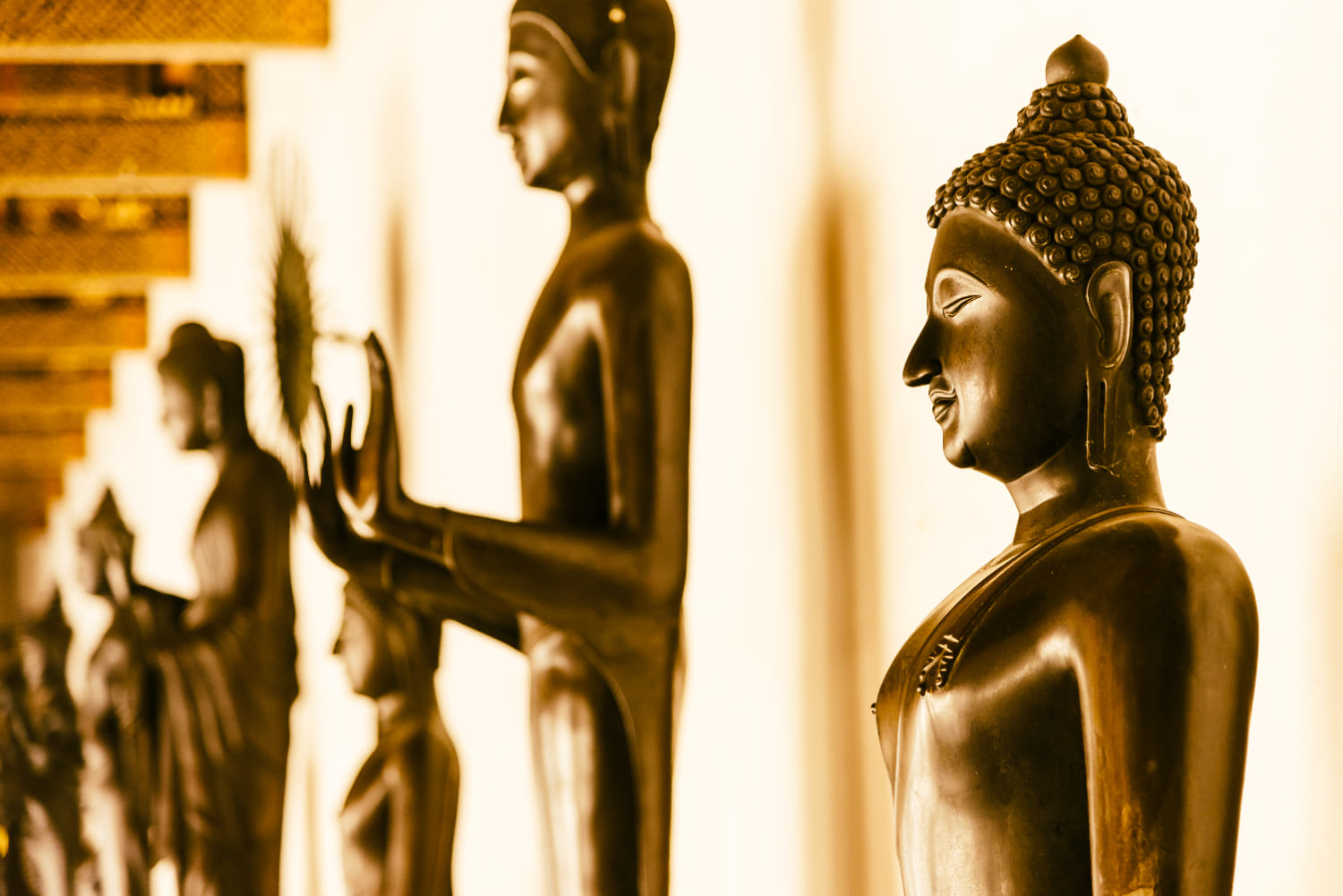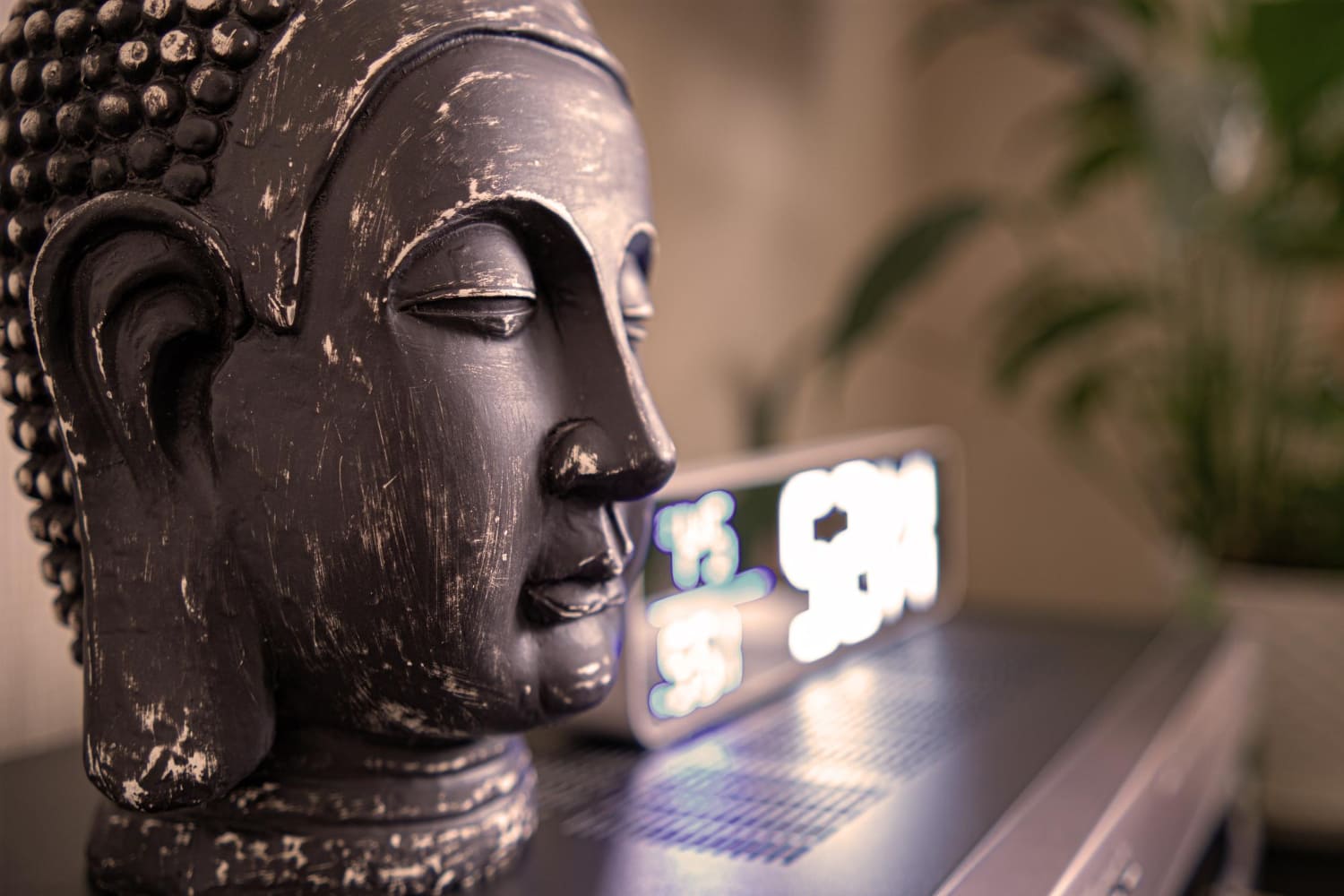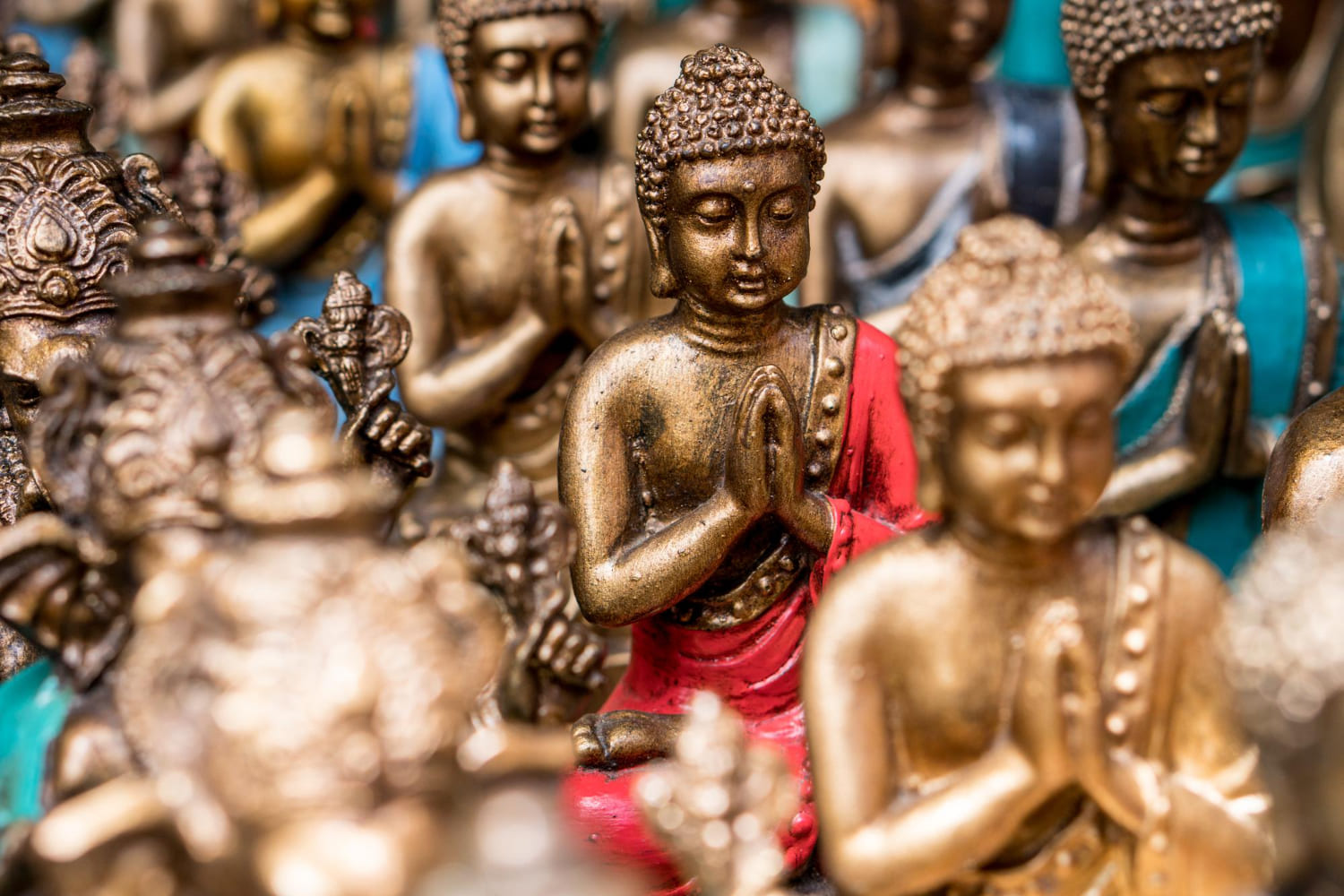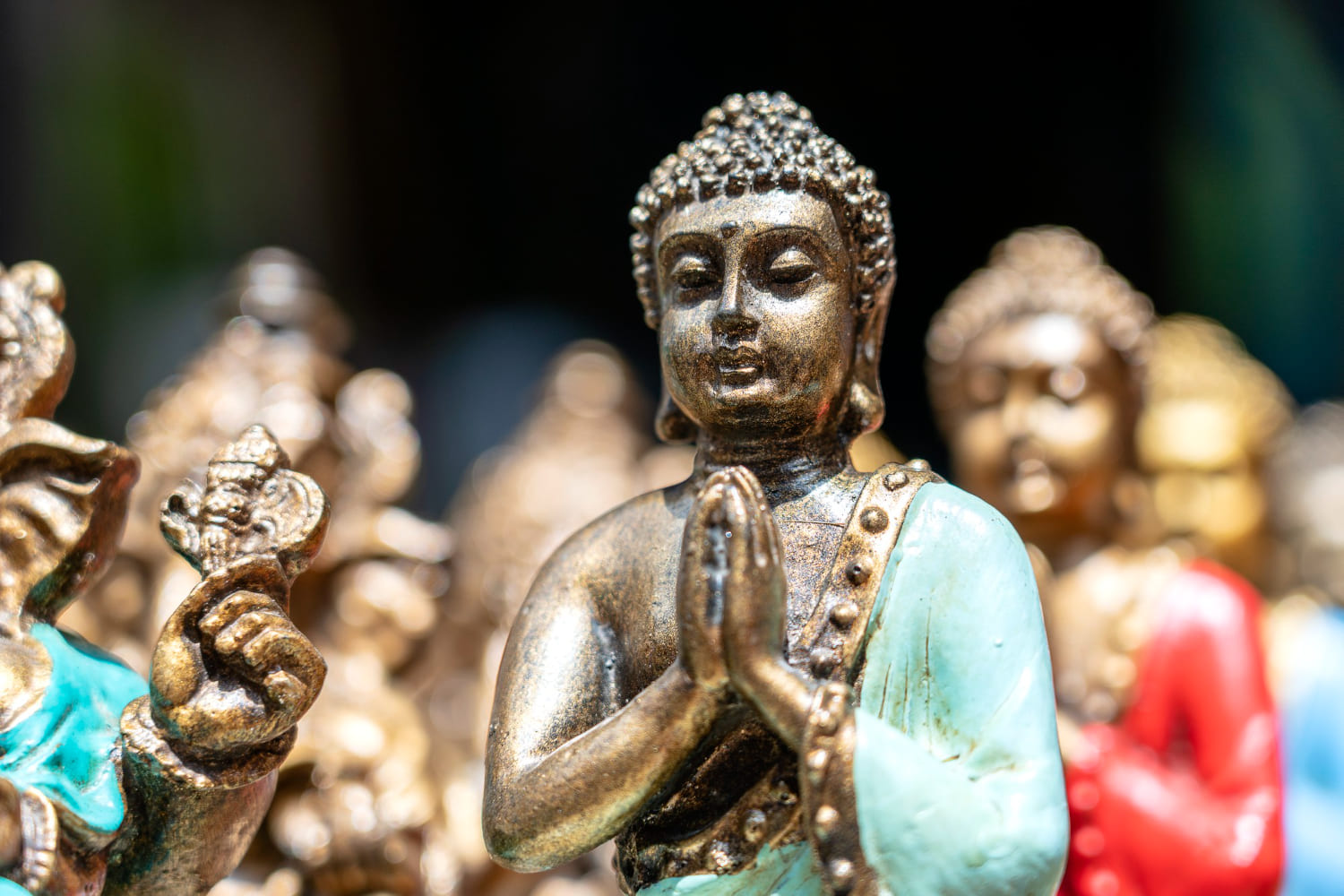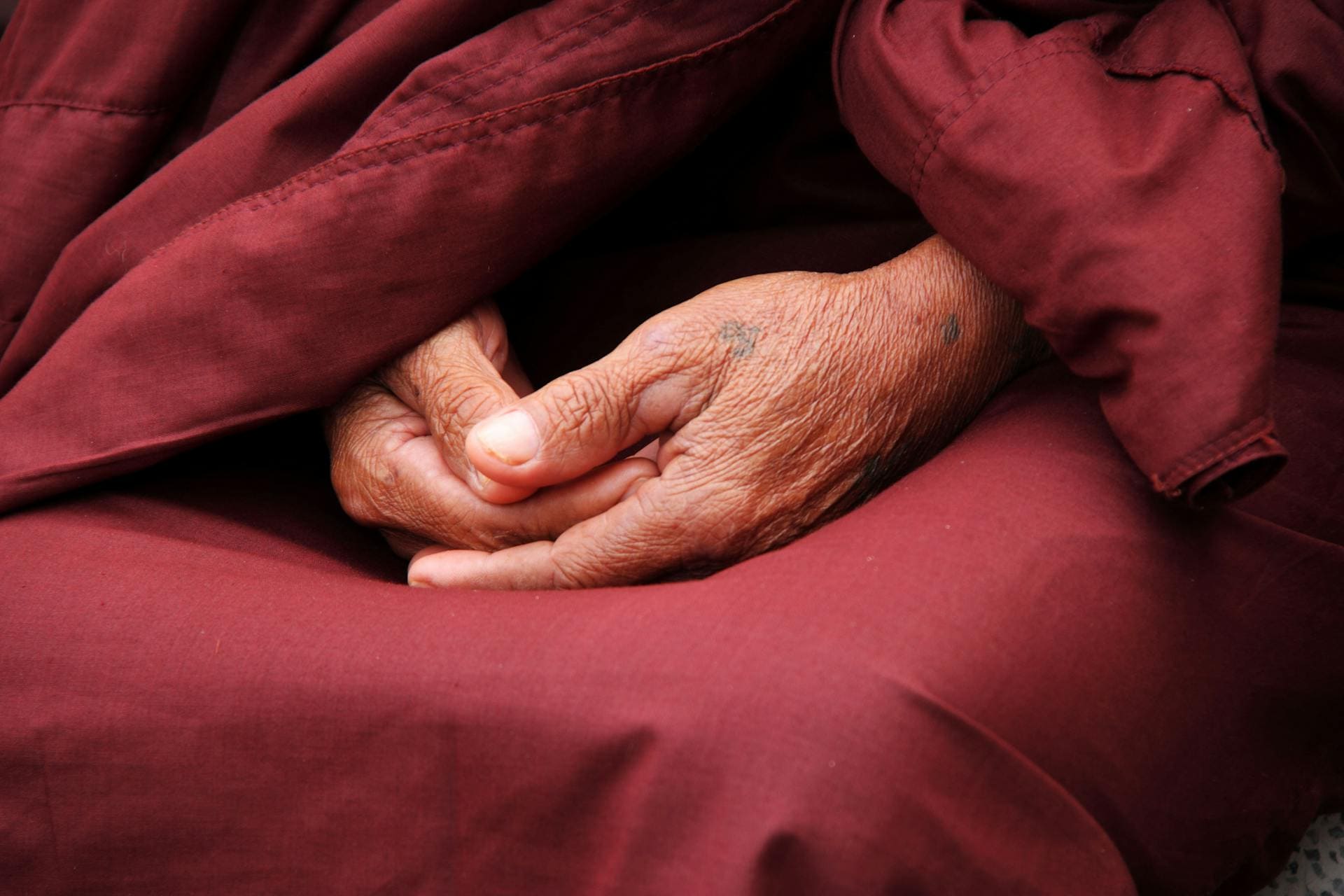Buddhism is a religion and philosophy that originated in ancient India and has spread throughout the world. It is based on the teachings of the Buddha, an Indian prince who lived in the 6th century BCE.
The Buddha’s teachings emphasize the importance of compassion, wisdom, and mindfulness, and offer a path to liberation from suffering.
There are many different Buddhist traditions, each with its own unique practices and beliefs.
Some of the most well-known traditions include Theravada Buddhism, which is practiced primarily in Southeast Asia and emphasizes the importance of individual enlightenment.
Mahayana Buddhism, which is practiced in East Asia and focuses on the ideal of the bodhisattva, or one who seeks to attain enlightenment for the benefit of all beings.
Vajrayana Buddhism, which is practiced in Tibet and other parts of Central Asia and emphasizes the use of meditation and ritual to achieve enlightenment.
Whether you are new to Buddhism or have been practicing for years, it can be difficult to navigate the many different traditions and understand their nuances.
That’s why we’ve put together this guide to Buddhist traditions, which offers a comprehensive overview of the different schools of Buddhism, their history and beliefs, and their practices and rituals.
Whether you are interested in learning more about the basics of Buddhism or want to deepen your understanding of a particular tradition, this guide has everything you need to know.
Theravada Buddhism
Theravada Buddhism, also known as the “Way of the Elders,” is one of the oldest and most traditional forms of Buddhism. It is the predominant form of Buddhism in Southeast Asia, where it has been practiced for over 2,000 years.
Theravada is often considered to have remained the closest to the Buddha’s original teachings and bears the most similarity to early Buddhism.
The core teachings of Theravada Buddhism are based on the Four Noble Truths and the Noble Eightfold Path.
The Four Noble Truths are the truth of suffering, the truth of the cause of suffering, the truth of the cessation of suffering, and the truth of the path leading to the cessation of suffering.
The Noble Eightfold Path consists of right understanding, right intention, right speech, right action, right livelihood, right effort, right mindfulness, and right concentration.
Theravada Buddhism places a strong emphasis on meditation, which is divided into two forms: Samatha and Vipassana.
Samatha, also known as calming meditation, is the earliest form of meditation and aims to calm the mind and develop concentration.
Vipassana, also known as insight meditation, aims to develop insight and wisdom through the observation of the nature of reality.
The Pali Canon, which is the oldest and most authoritative text in the Theravada tradition, contains the teachings of the Buddha and his disciples. The Pali Canon is divided into three parts, known as the three pitakas: the Vinaya Pitaka, the Sutta Pitaka, and the Abhidhamma Pitaka.
The Vinaya Pitaka contains the rules and regulations for the monastic community, the Sutta Pitaka contains the discourses of the Buddha, and the Abhidhamma Pitaka contains the philosophical and psychological teachings of the Buddha.
Mahayana Buddhism
Mahayana Buddhism is one of the three main existing branches of Buddhism, along with Theravada and Vajrayana.
It emerged in ancient India around the 1st century BCE and became the dominant influence on the Buddhist cultures of Central and East Asia, which it remains today.
Mahayana means “Great Vehicle” and refers to the idea that this branch of Buddhism is accessible to a greater number of people than other branches.
Mahayana Buddhism places great emphasis on the concept of Bodhisattvas, who are individuals who have attained enlightenment but choose to remain in the world to help others achieve enlightenment.
This is in contrast to the Theravada tradition, which focuses on individual enlightenment and the attainment of Nirvana.
One of the key beliefs of Mahayana Buddhism is the concept of “emptiness” or “shunyata.” This refers to the idea that all things, including the self, are empty of inherent existence. This belief is central to the Mahayana understanding of the nature of reality and the path to enlightenment.
Another important aspect of Mahayana Buddhism is the use of sutras, or sacred texts, which are believed to contain the teachings of the Buddha.
Mahayana sutras include the Lotus Sutra, the Heart Sutra, and the Diamond Sutra, among others. These texts are studied and recited by Mahayana practitioners as a means of attaining enlightenment.
Overall, Mahayana Buddhism is a rich and complex tradition that has had a profound impact on the cultures and societies of Asia. Its emphasis on compassion, wisdom, and the attainment of enlightenment for the benefit of all beings has made it a popular and enduring tradition.
Vajrayana Buddhism
Vajrayana Buddhism, also known as Tantric or Esoteric Buddhism, is a form of Mahayana Buddhism that originated in India and spread across the Himalayan region. It is most closely identified with Tibetan Buddhism, but it also influenced parts of Southeast Asia and East Asia.
Vajrayana Buddhism places great emphasis on the use of rituals, mantras, and visualizations to achieve enlightenment. It is also known for its use of mandalas, which are intricate geometric patterns used as a focus for meditation.
Vajrayana Buddhism also incorporates the use of deity yoga, which involves visualizing oneself as a deity in order to cultivate the qualities associated with that deity. This practice is believed to accelerate the path to enlightenment.
One of the most well-known practices in Vajrayana Buddhism is the use of prayer wheels. These are cylindrical devices that are filled with mantras and spun, with the belief that each rotation of the wheel generates spiritual merit.
Overall, Vajrayana Buddhism is a complex and multifaceted tradition that incorporates a wide range of practices and beliefs. Its emphasis on ritual and visualization sets it apart from other forms of Buddhism and makes it a unique and fascinating spiritual path to explore.
Zen Buddhism
Zen Buddhism is a school of Mahayana Buddhism that emphasizes simplicity, zazen meditation, nonduality, and nonconceptual understanding. Zen practice originated in China, Korea, Japan, and Vietnam, and later spread to the West. Zen takes many forms, as each culture that embraced it did so with their own emphases and tastes.
One of the core practices of Zen Buddhism is zazen meditation, which involves sitting quietly and focusing on your breath or a koan, a riddle-like question or statement that is meant to provoke insight. Zen Buddhists believe that everyone can discover their inner light through meditation.
Another important aspect of Zen Buddhism is the emphasis on nonduality and nonconceptual understanding. Zen practitioners seek to break down the barriers between subject and object, self and other, and to see the world as it truly is, without the filters of language or thought.
There are several major sects of Zen Buddhism, including the Soto, Rinzai, and Obaku schools. Each school has its own unique practices and teachings, but all share a commitment to the basic principles of Zen Buddhism.
Some of the most prominent figures in Zen Buddhism include Bodhidharma, the legendary founder of Zen; Dogen, the founder of the Soto school; and Hakuin, a famous Rinzai master. Important texts in Zen Buddhism include the Platform Sutra, the Blue Cliff Record, and the Gateless Gate.
Pure Land Buddhism
Pure Land Buddhism is a branch of Mahayana Buddhism that is centered around achieving rebirth in a Pure Land. It is one of the most widely practiced traditions of Buddhism in East Asia, particularly in China and Japan.
The Pure Land school of thought began in India around the 2nd century BCE and later spread to China. The main focus of Pure Land Buddhism is on the Buddha Amitabha, also known as the “Buddha of Infinite Light,” who is associated with the Pure Land. Devotion to Amitabha and recitation of his name are the main practices of Pure Land Buddhism.
In Pure Land Buddhism, the ultimate goal is to be reborn in the Pure Land, a heavenly realm where one can more easily attain enlightenment. The Pure Land is said to be a place of great beauty and bliss, where suffering does not exist. Once reborn in the Pure Land, one can continue to practice and eventually attain enlightenment.
While Pure Land Buddhism is often associated with devotion and faith, it is important to note that it is still a form of Buddhism and emphasizes the importance of individual effort and practice.
Pure Land Buddhism also shares many similarities with other forms of Mahayana Buddhism, such as the emphasis on compassion and the belief in the interconnectedness of all beings.
Overall, Pure Land Buddhism offers a unique approach to Buddhist practice, emphasizing devotion and the aspiration for rebirth in a Pure Land. It is a popular tradition in East Asia and continues to be an important part of Buddhist practice today.
Nichiren Buddhism
Nichiren Buddhism is a Japanese Buddhist movement in the Mahayana tradition. It was founded by Nichiren, a Japanese Tendai priest who lived during the 13th century. Nichiren Buddhism is also popular in the West and has a fast-growing membership in the UK.
Nichiren believed that the Lotus Sutra constitutes all of the true teachings of the Buddha. He also believed that the Buddha’s teachings had entered a time of degeneration.
Nichiren’s teachings are based on the practice of chanting “Nam-myoho-renge-kyo,” which is considered the essence of the Lotus Sutra.
One of the distinctive features of Nichiren Buddhism is its emphasis on the lay practitioner. Nichiren believed that all people, regardless of their social status or background, could attain Buddhahood through the practice of chanting.
Nichiren Buddhism has several branches, including Soka Gakkai International (SGI), which is the largest lay Buddhist organization in the world. SGI is dedicated to promoting peace, culture, and education through the practice of Buddhism.
Overall, Nichiren Buddhism is a practice-oriented tradition that emphasizes the potential for all people to attain enlightenment. Its teachings are based on the Lotus Sutra and the practice of chanting “Nam-myoho-renge-kyo.”
Tibetan Buddhism
Tibetan Buddhism is a branch of Vajrayana Buddhism that evolved from the 7th century CE in Tibet. It is based mainly on the rigorous intellectual disciplines of Madhyamika and Yogachara philosophy and utilizes the Tantric ritual practices that developed in Central Asia and particularly in Tibet.
Tibetan Buddhism inherited many of the traditions of late Indian Buddhism, including a strong emphasis on monasticism, a sophisticated scholastic philosophy, and elaborate forms of tantric practice.
The distinctive qualities of Tibetan Buddhism can be found in its Vajrayana heritage. This includes the use of mandalas, mudras, and mantras, as well as the practice of deity yoga, which involves visualizing oneself as a deity.
Tibetan Buddhism also places great emphasis on the guru-disciple relationship, which is considered essential for spiritual progress.
There are many schools and traditions within Tibetan Buddhism, each with its own unique practices and teachings. The four main schools are Nyingma, Kagyu, Sakya, and Gelug.
The Nyingma school is the oldest and focuses on the practice of Dzogchen, which emphasizes the innate nature of mind. The Kagyu school is known for its emphasis on meditation and the transmission of teachings through oral instruction.
The Sakya school places great importance on the study of Buddhist philosophy and is known for its extensive collection of Buddhist scriptures.
The Gelug school, also known as the “Yellow Hat” school, is the most recent and is known for its emphasis on monastic discipline and the study of logic and debate.
Overall, Tibetan Buddhism is a rich and diverse tradition that offers a wealth of teachings and practices for those seeking spiritual development.
Whether one is interested in meditation, philosophy, or ritual practices, there is much to explore within this fascinating tradition.
Buddhism in Southeast Asia
Buddhism has had a profound impact on Southeast Asia. The region has been home to a variety of Buddhist traditions, including Mahayana and Theravada Buddhism. While Mahayana Buddhism was historically prominent in the region, most countries in Southeast Asia now follow the Theravada tradition.
Theravada Buddhism is often described as the “Southern” school of Buddhism, and it is the dominant form of Buddhism in countries such as Thailand, Cambodia, Laos, and Myanmar. In these countries, Buddhism is deeply intertwined with local culture and traditions, and it plays an important role in shaping social norms and values.
One of the most striking features of Buddhism in Southeast Asia is the prevalence of Buddhist temples and monasteries. These institutions serve as centers of religious and cultural life, and they are often the focus of community events and celebrations.
Many temples and monasteries also offer education and training in Buddhist philosophy and meditation.
Buddhism in Southeast Asia has also been shaped by the region’s history of trade and cultural exchange. Over the centuries, Buddhist ideas and practices have been transmitted between Southeast Asia and other parts of Asia, including India, Sri Lanka, and China.
As a result, Southeast Asian Buddhism has developed a unique blend of local and foreign influences.
Buddhism in East Asia
Buddhism in East Asia refers to the form of Buddhism practiced in China, Japan, Korea, and Vietnam. All these traditions share a common basis of the Chinese Buddhist Canon, which is grounded in the Mahayana school of thought.
The spread of Buddhism in East Asia was primarily due to the work of dedicated traveling monks from India and China.
During the Tang Dynasty (618-907), Buddhism became the dominant religion of China, and several new styles emerged over the years. These styles include Chan (Zen) Buddhism, Pure Land Buddhism, and Tiantai (Lotus) Buddhism.
Zen Buddhism emphasizes the practice of meditation and the attainment of enlightenment through direct experience.
Pure Land Buddhism focuses on the recitation of the name of Amitabha Buddha, with the goal of rebirth in his Western Paradise.
Tiantai Buddhism emphasizes the Lotus Sutra as the ultimate teaching of the Buddha.
In Japan, Buddhism was introduced in the 6th century, and over time, several distinct schools emerged.
These include Zen Buddhism, Pure Land Buddhism, and Nichiren Buddhism. Nichiren Buddhism emphasizes the chanting of the Lotus Sutra, with the goal of achieving enlightenment in this lifetime.
Zen Buddhism, as in China, emphasizes meditation and direct experience. Pure Land Buddhism focuses on rebirth in the Western Paradise of Amitabha Buddha.
In Korea, Buddhism was introduced in the 4th century, and several schools developed over time. These include the Jogye Order, which emphasizes the practice of Seon (Zen) meditation, and the Cheontae Order, which emphasizes the Lotus Sutra and the attainment of enlightenment through the practice of the Six Paramitas.
In Vietnam, Buddhism was introduced in the 2nd century BCE, and over time, several schools emerged. These include the Zen-inspired Thien (Vietnamese for Chan) school and the Pure Land-inspired Tinh Do Cu Si (True Buddha School).
Buddhism in South Asia
Buddhism originated in South Asia, specifically in present-day Nepal and India, during the 5th century BCE. It spread rapidly throughout the region and became a dominant religion in many countries, including Sri Lanka, Myanmar, Thailand, and Cambodia.
There are three major traditions of Buddhism in South Asia: Theravada, Mahayana, and Vajrayana. Theravada is the oldest and most conservative tradition, while Mahayana and Vajrayana are later developments.
Theravada Buddhism is prevalent in Sri Lanka, Myanmar, and Thailand. It emphasizes the original teachings of the Buddha and the attainment of enlightenment through personal effort and meditation.
Monks play a central role in Theravada Buddhism, and laypeople support them through donations and other forms of assistance.
Mahayana Buddhism is found in countries such as China, Japan, and Vietnam. It emphasizes the bodhisattva ideal, which involves working for the benefit of all sentient beings. Mahayana Buddhism also includes the belief in celestial beings, such as bodhisattvas and Buddhas, who can aid in the attainment of enlightenment.
Vajrayana Buddhism is practiced primarily in Tibet and the Himalayan regions. It incorporates tantric practices, which involve the use of mantras, mudras, and other esoteric techniques to achieve spiritual goals.
Vajrayana Buddhism also places great emphasis on the guru-disciple relationship and the transmission of teachings through an unbroken lineage.
Overall, Buddhism has had a profound impact on South Asian culture and society. It has influenced art, literature, philosophy, and other areas of human endeavor, and continues to be a vibrant and dynamic force in the region.
Buddhism in the West
Buddhism has been present in the Western world for centuries, but it was not until the 20th century that it began to gain significant popularity. Today, there are millions of Buddhists in the West, and the religion has become an important part of the spiritual landscape of many countries.
The first Westerners to become interested in Buddhism were scholars and intellectuals who were drawn to the religion’s philosophy and practices. In the 19th century, translations of Buddhist texts began to appear in European languages, and a number of Westerners began to study and practice Buddhism.
However, it was not until the 1960s and 1970s that Buddhism began to gain a significant following in the West.
One of the reasons for the growth of Buddhism in the West was the interest in Eastern spirituality that emerged during the counterculture movement of the 1960s. Many young people were dissatisfied with the materialism and consumerism of Western society and were drawn to the spiritual traditions of Asia, including Buddhism.
Today, there are many different Buddhist traditions and schools in the West. Some of the most popular include Zen Buddhism, Tibetan Buddhism, and Theravada Buddhism.
Each of these traditions has its own unique practices and teachings, but they all share a commitment to the Buddha’s teachings and the goal of achieving enlightenment.
Conclusion
Buddhism is a diverse and complex religion that has evolved over thousands of years. Throughout its history, it has developed many different traditions, each with its own unique practices and beliefs.
From the early Theravada tradition to the Mahayana and Vajrayana traditions that emerged later, Buddhism has continued to evolve and adapt to the changing needs and circumstances of its followers.
Despite their differences, all Buddhist traditions share a common goal: to achieve enlightenment and liberation from suffering. This goal is pursued through a variety of practices, including meditation, ethical conduct, and the study of Buddhist teachings.
While the specific practices and beliefs may vary from tradition to tradition, the underlying principles of Buddhism remain the same.
Today, Buddhism is practiced by millions of people around the world, and its influence can be seen in many aspects of modern culture.
From mindfulness meditation to the popularity of Buddhist art and literature, Buddhism continues to have a profound impact on the world we live in.
As we have seen throughout this guide, there is no one-size-fits-all approach to Buddhism. Each tradition has its own unique strengths and weaknesses, and each individual practitioner must find the path that works best for them.
Whether you are drawn to the simplicity of Theravada Buddhism, the compassion of Mahayana Buddhism, or the esoteric practices of Vajrayana Buddhism, there is a tradition out there that can help you on your journey towards enlightenment.
